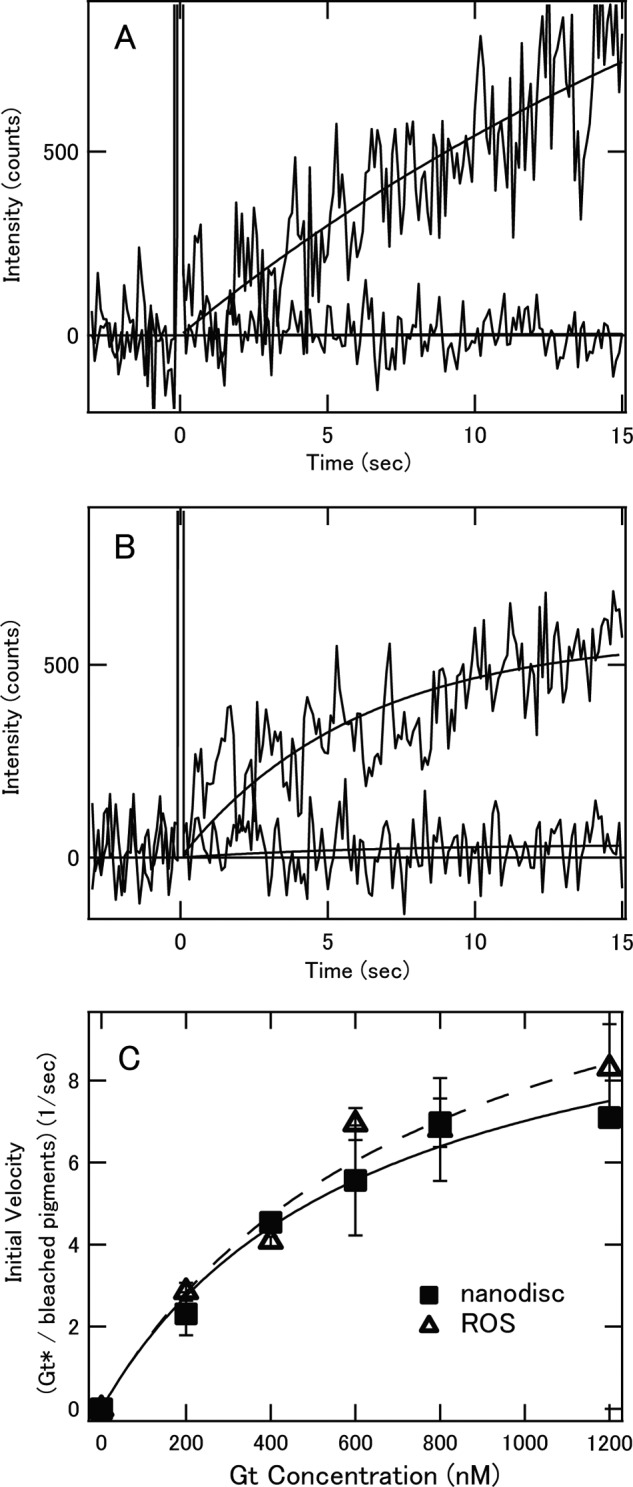FIGURE 2.

Comparison of Gt activation efficiencies of bvRh in ROSs and nanodiscs. A, Gt activation by photoactivated bvRh in POPC/POPG nanodiscs. 2 nm pigment was mixed with 400 nm Gt and 100 μm GTPγS at 20 °C. The mixture was irradiated with a yellow flash at time 0, and the fluorescence intensity was monitored (upper traces). The fluorescence increase that originated from opsin formation was monitored in the absence of Gt at 20 °C (lower traces). B, Gt activation by photoactivated bvRh in ROSs. 2 nm pigment was mixed with 400 nm Gt and 100 μm GTPγS at 20 °C. The mixture was irradiated with a yellow flash at time 0, and the fluorescence intensity was monitored (upper traces). The fluorescence increase that resulted from opsin formation was monitored in the absence of Gt at 20 °C (lower traces). C, initial velocities of Gt activation by photoactivated bvRh in ROSs and POPC/POPG nanodiscs at 20 °C (open triangles and filled squares, respectively). Plots of initial velocities were fitted by the Michaelis-Menten equation (solid line for ROSs and dashed line for nanodiscs). Error bars represent S.D. estimated from three independent measurements.
